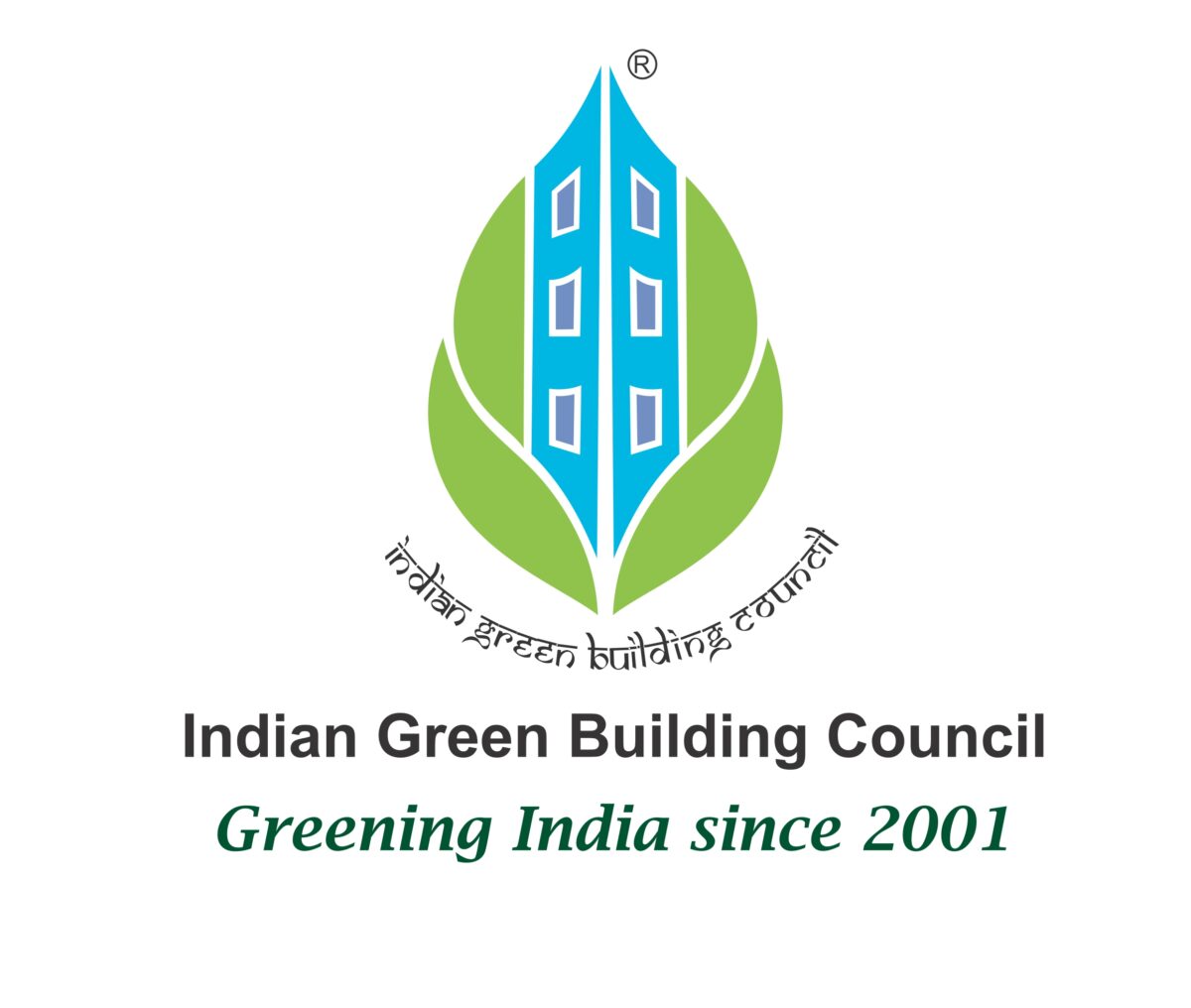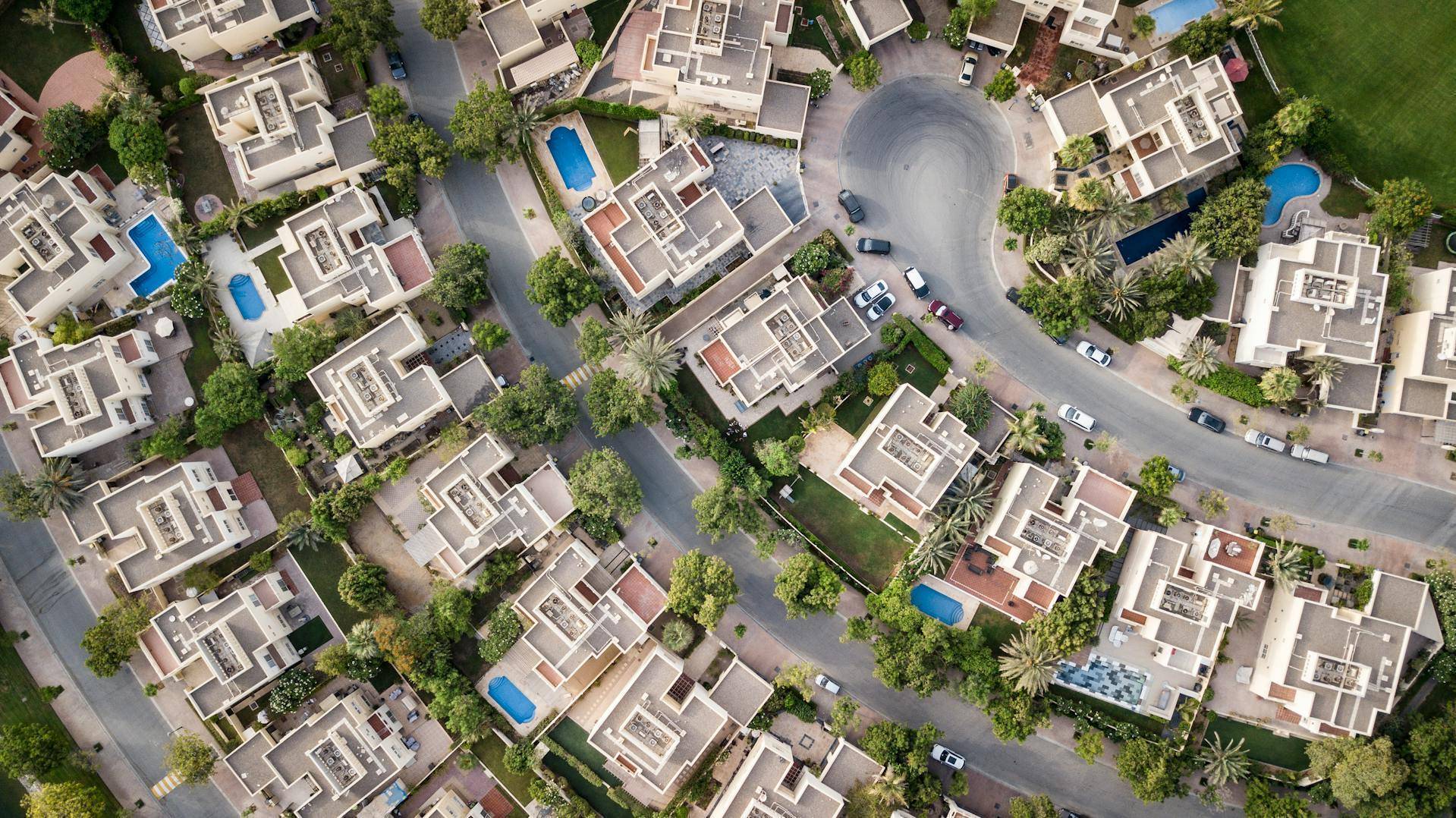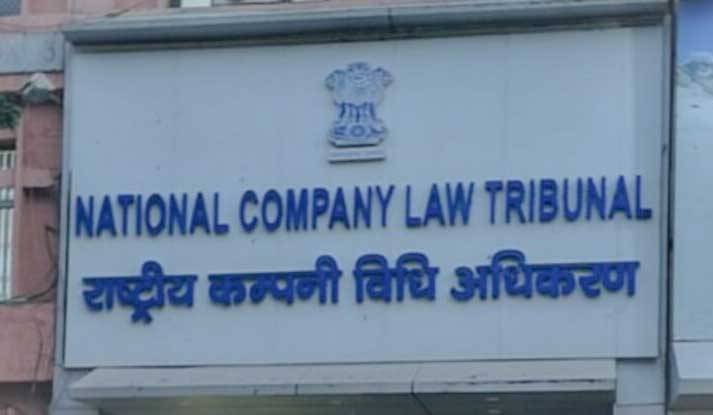As sustainability becomes a key focus in construction, green building certifications like LEED, IGBC, and GRIHA are becoming more popular in India’s real estate market. Builders and investors now see the value of certified green buildings, powered by the growing need for eco-friendly and energy-saving properties.
A report by CBRE says the demand for green buildings in India is expected to grow by 20% each year as more projects adopt sustainable practices. The Indian Green Building Council (IGBC) also notes that India is the second-largest market for LEED-certified projects worldwide, with over 7.5 billion square feet of green building space.
What are Green Buildings?
Green buildings, also known as sustainable buildings or green construction, represent a shift towards environmentally responsible and resource-efficient building practices. These structures are thoughtfully designed to address pressing concerns such as resource conservation, environmental impact and resident well-being, while ensuring economic viability and durability. Green construction offers benefits that go beyond protecting the environment, including significant cost savings and improved quality of life.
Why Do We Need Green Buildings?
The world’s energy use is growing fast, leading to one of our biggest challenges—climate change. This has also caused an increase in harmful greenhouse gases like carbon dioxide. India is the 5th largest producer of these gases, which is taking a toll on our natural resources. Here's how:
- Water Shortage: Less rain and overuse of groundwater have led to water crises in places like Delhi, where groundwater is almost gone.
- Food Supply Issues: More demand for resources puts pressure on farming, risking future food shortages.
- Harm to Nature: Overuse of forests and wildlife is damaging biodiversity and activities that depend on it.
These challenges show why we urgently need sustainable solutions like green buildings in India. Green buildings are designed to save water, use less energy, and reduce waste. By adopting green practices, buildings in India can lower energy use by 20–30%, cut water usage by up to 50%, and reduce waste significantly. This not only benefits the environment but also increases property values by up to 10%, lowers operating costs, and improves occupant productivity. With the construction sector responsible for 22% of India’s CO2 emissions, shifting to green buildings is essential to reduce environmental damage. They also come with plenty of other benefits, such as:
- Saving Natural Resources: By using renewable energy instead of depleting non-renewable ones.
- Cost Savings: Green buildings cost less to run, last longer, and give better returns on investment. Certified green buildings can save up to 14% in operational costs within the first five years.
- Improved Living Spaces: They create healthier, more comfortable, and more efficient spaces for people to live and work.
Green buildings also make the most of India’s tropical climate, providing an eco-friendly solution to the rapid growth in construction.
Popular Green Building Certifications in India
Green building certification systems are tools and rating methods used to evaluate how sustainable and environmentally friendly a building or construction project is. These systems aim to enhance the quality of buildings, encourage sustainable design and construction practices, and support the United Nations Sustainable Development Goals. Projects that meet specific performance and quality standards receive a certification as proof of their achievement.
Now we will see, what are the different green building certifications in India.
1. Leadership in Energy and Environmental Design (LEED)

Source: Linkedin
LEED, which stands for Leadership in Energy and Environmental Design, is the world’s most popular system for rating how eco-friendly and sustainable a building is. It is managed by the U.S. Green Building Council (USGBC) and helps guide architects, builders, and property owners to create healthier, energy-efficient, and cost-saving spaces.
LEED-certified buildings are known for their high performance in areas like energy efficiency, water conservation, and indoor air quality. A LEED certificate is a globally recognized badge that shows a building meets top sustainability standards. Today, there are over 197,000 LEED-certified projects worldwide, spanning 186 countries and covering more than 29 billion square feet of space!
How Does LEED Certification Work?
LEED certification is a system that evaluates all kinds of buildings, like schools, hospitals, offices, and malls, to see how eco-friendly and sustainable they are. It looks at several factors, such as picking locations with good public transport to reduce car use, saving energy with better designs and renewable sources, and conserving water with efficient fixtures and recycling systems. It also focuses on using eco-friendly building materials, protecting natural environments during construction, and ensuring good indoor air quality by reducing harmful toxins. Additionally, it promotes sustainability at every step, from planning to operation, to creating spaces that are better for both people and the planet.
Levels of LEED Certification
LEED certification is awarded based on the number of points a building earns during evaluation. There are four levels:
- Certified: 40–49 points
- Silver: 50–59 points
- Gold: 60–79 points
- Platinum: 80+ points
The more points a building gets, the higher its certification level.
2. Indian Green Building Council (IGBC)

Source: World Green Building Council
The Indian Green Building Council (IGBC), based in Hyderabad, is India’s leading authority on green building certifications. Formed in 2001 as part of the Confederation of Indian Industry (CII), IGBC aims to create eco-friendly and sustainable buildings across the country. Its vision is to make India a global leader in sustainable construction by 2025.
IGBC offers various services, such as green building certifications, training programs, and events like the annual Green Building Congress. It collaborates with architects, developers, government bodies, and industries to promote green practices. Over 14,500 projects in India, covering 12.3 billion square feet, are part of IGBC’s green building movement, with 5,820 of them already certified and fully operational.
How Does IGBC Certification Work?
The IGBC certification process is a way to make buildings eco-friendly and sustainable. First, the project team registers with IGBC and can optionally seek a certification to attract buyers and get government benefits. Then, during the documentation phase, experts help the team prepare reports, calculations, and evidence showing the project meets green building standards. Finally, after construction, IGBC reviews all the documents, checks the project through inspections, and awards the certification if everything meets their criteria. This ensures the building is truly green and environmentally responsible.
IGBC Rating Systems
IGBC has developed specific rating systems tailored to different building types and project goals. These systems are voluntary and market-driven, encouraging developers to adopt green practices. They include:
- Residential Projects: 4 Ratings
- Commercial Projects: 7 Ratings
- Industrial Projects: 2 Ratings
- Built Environment Projects: 10 Ratings
- Net Zero Projects: 4 Ratings
- Other Building Types: 3 Ratings
Certification Levels
Based on the project’s performance, IGBC awards certifications at four levels:
- Certified: Recognizes best practices.
- Silver: Highlights outstanding performance.
- Gold: Represents national excellence.
- Platinum: Demonstrates global leadership.
Projects earn points in various categories like Sustainable Design, Energy Efficiency, Water Conservation, and Indoor Environmental Quality. The more points earned, the higher the certification level. To get certified, projects must submit detailed documentation, such as plans, bills, and calculations, to prove compliance.
For a smooth certification process, hiring an IGBC-accredited green building consultant is recommended. These experts guide projects in meeting requirements and achieving their green goals effectively.
3. Green Rating for Integrated Habitat Assessment (GRIHA)

Source: Sustainable Infrastructure Tool Navigator
GRIHA (Green Rating for Integrated Habitat Assessment) is a rating system that helps people make buildings more environmentally friendly and sustainable. In simple terms, buildings use a lot of resources like water, energy, and materials during their construction, use, and demolition. At the same time, they also generate waste and pollution. GRIHA aims to reduce this by evaluating buildings at every stage of their life—from planning to operation—so that they use fewer resources, produce less waste, and are kinder to the environment.
It works like a scorecard for buildings, measuring things like energy use, water saving, pollution control, and use of renewable energy. The goal is to make buildings healthier for people to live and work in, while also protecting nature. GRIHA looks at how buildings are planned, built, and maintained to ensure they are efficient and sustainable.
Some benefits of GRIHA-rated green buildings are:
- They use less electricity and water.
- They produce less pollution and waste.
- They protect natural spaces like trees and wildlife.
- They are healthier for the people who live and work there.
- They help fight climate change by reducing greenhouse gas emissions.
GRIHA Rating Process
New construction projects with a built-up area of over 2,500 m² (excluding parking and basements) are eligible for GRIHA certification. The process starts with online registration and fee payment, followed by an orientation workshop where GRIHA officials explain the process and answer project-related queries. During construction, two site visits are conducted: the first checks sustainable practices like construction quality, and the second verifies systems such as electrical, plumbing, and internal finishes. As the project nears completion, the team submits documents online, which undergo a preliminary review by experts. A final site visit is conducted to verify that everything matches the submitted documentation. Based on these evaluations, a final rating is awarded, valid for 5 years. GRIHA then conducts a green awareness drive to educate occupants about maintaining a green building. To renew the rating, projects can either submit audit data for energy, water, and waste over 3 consecutive years or enroll for the GRIHA EB (Existing Building) rating, extending certification for another 5 years.
How Does the GRIHA Rating System Work?
GRIHA awards star ratings to buildings based on how well they meet green and sustainable building standards. The scores are based on a range of points:
- If a building scores 25-40 points, it gets 1 star.
- A score of 41-55 points earns 2 stars.
- 56-70 points means the building gets 3 stars.
- A score of 71-85 points is awarded 4 stars.
- Buildings scoring 86 or more points receive the highest rating of 5 stars.
The more stars a building earns, the greener and more sustainable it is. This system helps buildings aim for better resource efficiency and eco-friendly practices.
4. Bureau of Energy Efficiency (BEE)

Source: India Mart
BEE Certification is a program launched by the Bureau of Energy Efficiency (BEE), under the Government of India, to promote energy saving and reduce electricity consumption across the country. It was introduced as part of the Energy Conservation Act of 2001. The main idea is to encourage people and businesses to use energy-efficient products and practices to save power and money.
One of the most visible parts of BEE Certification is the Star Rating system. You may have seen star labels on appliances like refrigerators, air conditioners, and fans. These labels show how energy-efficient a product is, with ratings from 1 to 5 stars. A 5-star product is the most efficient, meaning it consumes less electricity and reduces your power bills.
BEE also sets energy standards for products, buildings, and industries. It ensures that equipment and appliances meet certain energy-saving criteria. Alongside this, BEE works to spread awareness about energy conservation, provide training, and even support companies and individuals who take up energy-saving projects.
The overall goal of BEE Certification is to help consumers make smart choices, reduce energy waste, and protect the environment. By promoting energy-efficient products, BEE not only helps people save money but also contributes to a cleaner and more sustainable future for the country.
BEE Criteria and Certification Levels
1. Certified Energy Manager (CEM): A certification for professionals managing energy in organizations, requiring a degree and three years of experience in energy management.
2. Certified Energy Auditor (CEA): A certification for professionals who conduct energy audits, requiring a degree and two years of energy auditing experience.
3. Energy Conservation Professional (ECP): A certification for professionals providing energy consulting services, requiring a degree and five years of experience in energy consulting.
BEE Registration and Rating Procedure
The BEE registration and rating process has three steps.
- First, the manufacturer or importer of an electrical appliance or equipment must apply to BEE, paying a fee and submitting a technical report on the product’s energy efficiency.
- In the second step, BEE tests the product to check if it meets energy efficiency standards. If the product passes, it gets a star rating from 1 to 5 stars, with 5 being the best.
- In the third step, BEE issues a certificate of registration and rating to the manufacturer or importer of the product.
This process is voluntary, but many manufacturers choose to register their products to meet government requirements or to promote their products as energy-efficient.
How green certifications impact tenant health and well-being
Green building certifications focus on health and comfort by improving indoor air quality, using low-VOC materials, enhancing ventilation, and incorporating natural light. Features like larger windows and open designs improve tenant mood, productivity, and even sleep quality. According to a JLL report, 83% of Indian tenants prioritize health and well-being features when selecting properties, highlighting the growing importance of these attributes.
Certified green buildings not only offer healthier environments but also provide financial advantages. A study by Knight Frank shows these buildings command a 7-10% rental premium compared to non-certified ones. According to GlobalData, India’s green building market was valued at $30.24 billion in 2023 and is expected to grow at a compound annual growth rate (CAGR) of over 5% between 2023 and 2028. From 2017 to 2022, the market grew at a CAGR of 7.5%.
They also reduce tenant turnover and associated costs, ensuring better long-term returns. With increasing demand for energy-efficient spaces and the added value of health-focused designs, green certifications are transforming India’s real estate landscape. As India works towards its Paris Agreement commitments and aims for net-zero emissions by 2070, adopting green building practices will play a crucial role in achieving sustainable development, conserving resources, and improving quality of life.
However, green building certifications are becoming an important factor in increasing property value in India. Buildings with green certifications, like LEED and GRIHA, tend to have higher rental rates and resale prices due to their energy efficiency, lower running costs, and better impact on tenant health. A recent report from the Indian Green Building Council shows that certified properties can see rent premiums of up to 15% and resale values 10-20% higher than non-certified ones. As smart technologies and net-zero buildings become more common, the demand for green-certified properties is only expected to grow, making it a smart investment for property owners and investors looking for long-term value and alignment with future trends.
Image source: Pexels









.png)